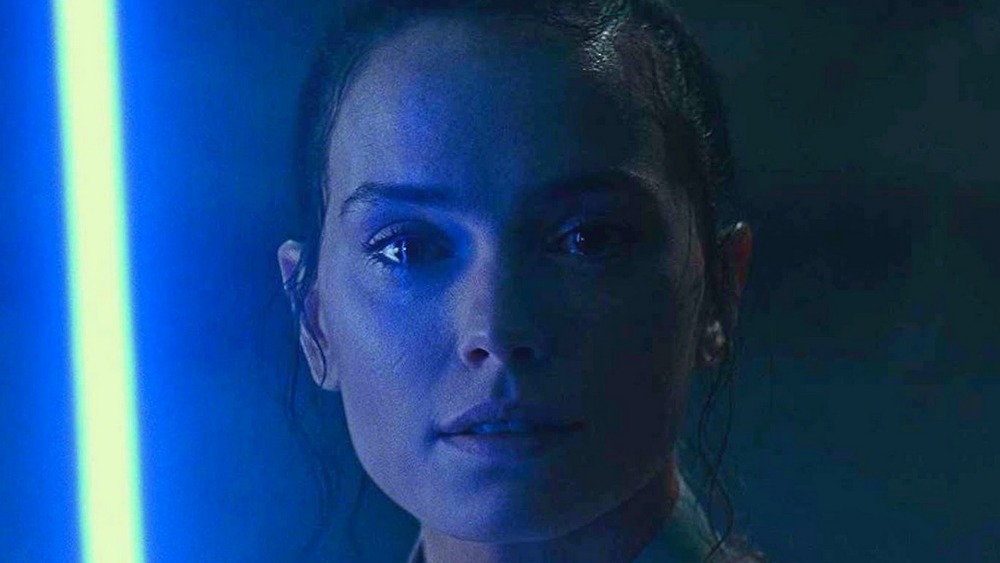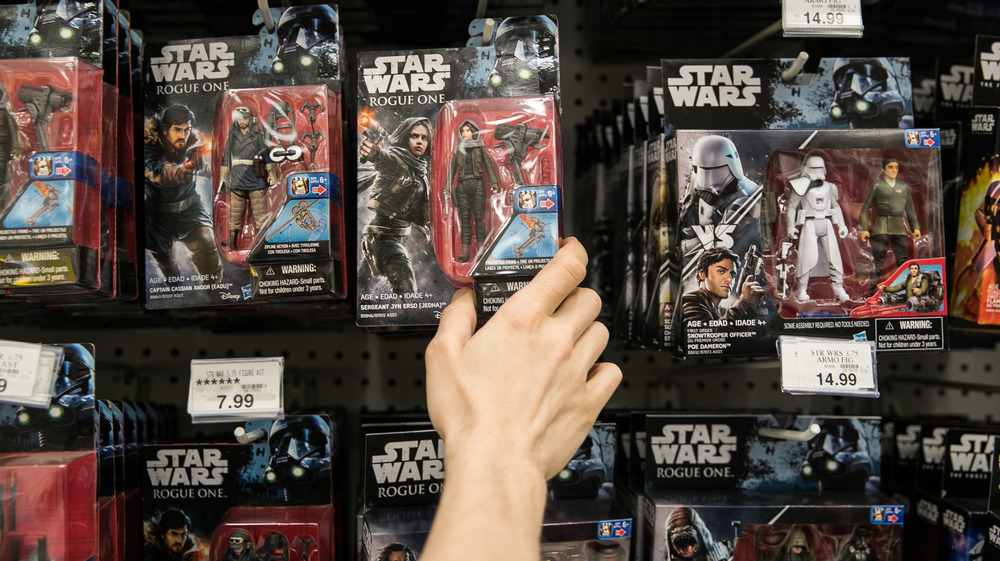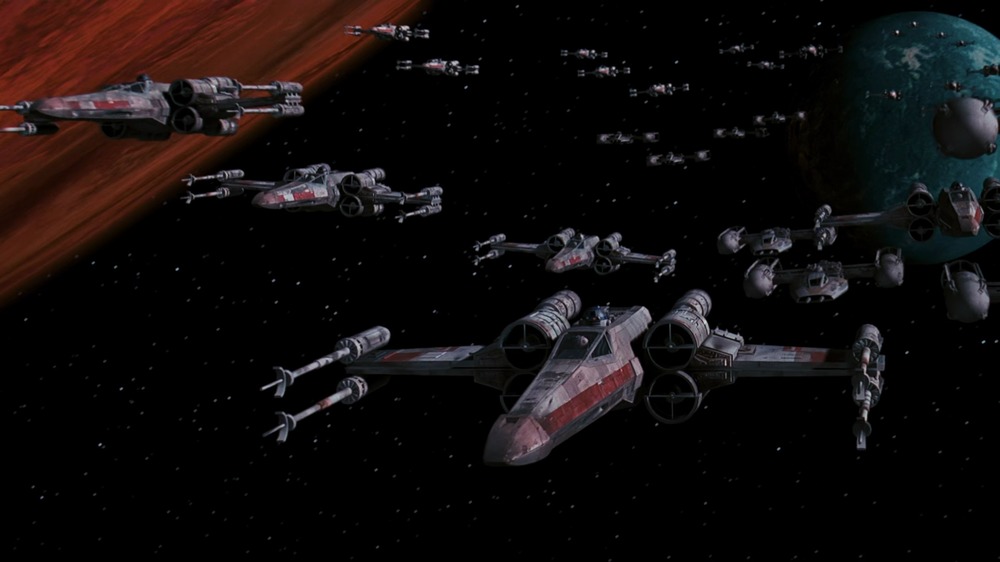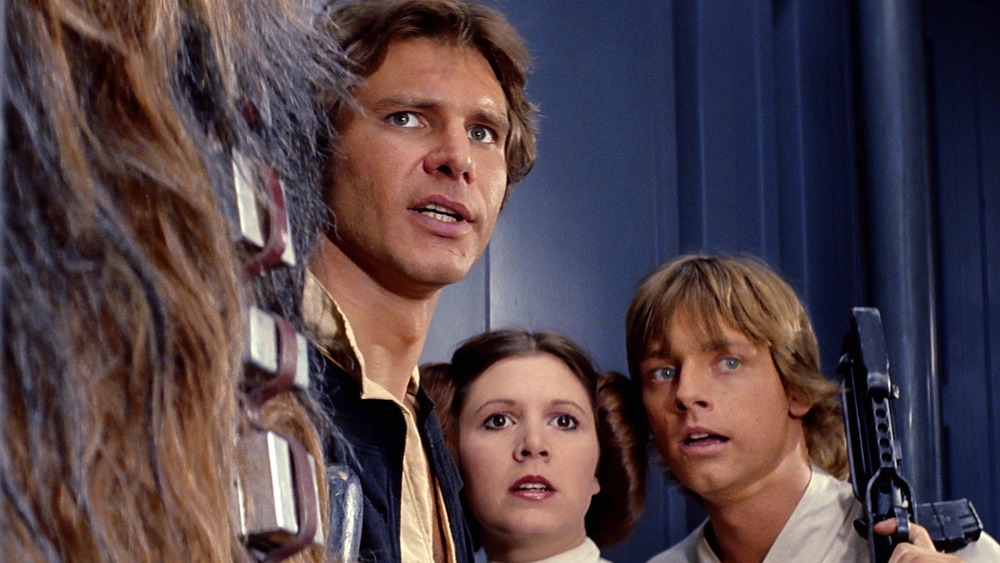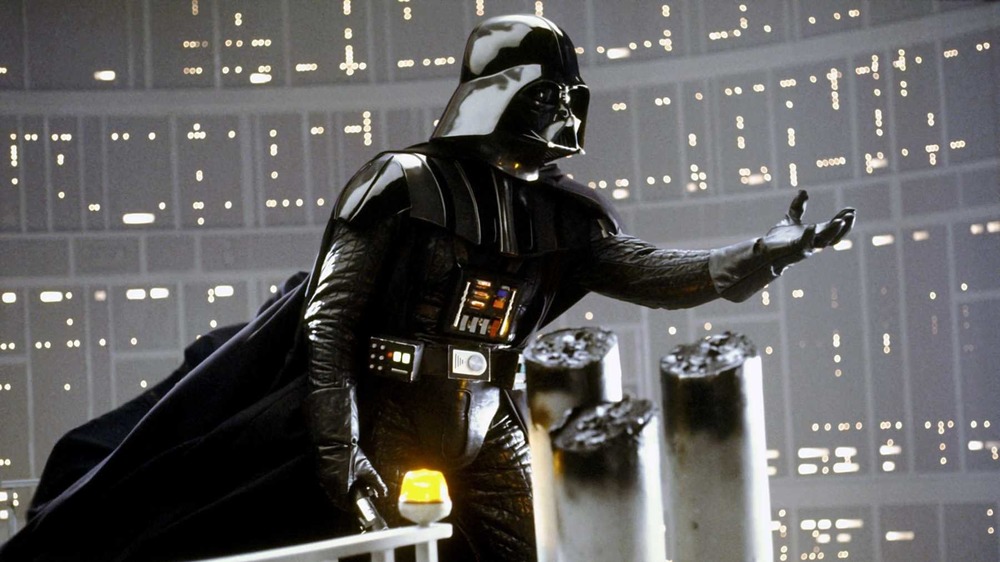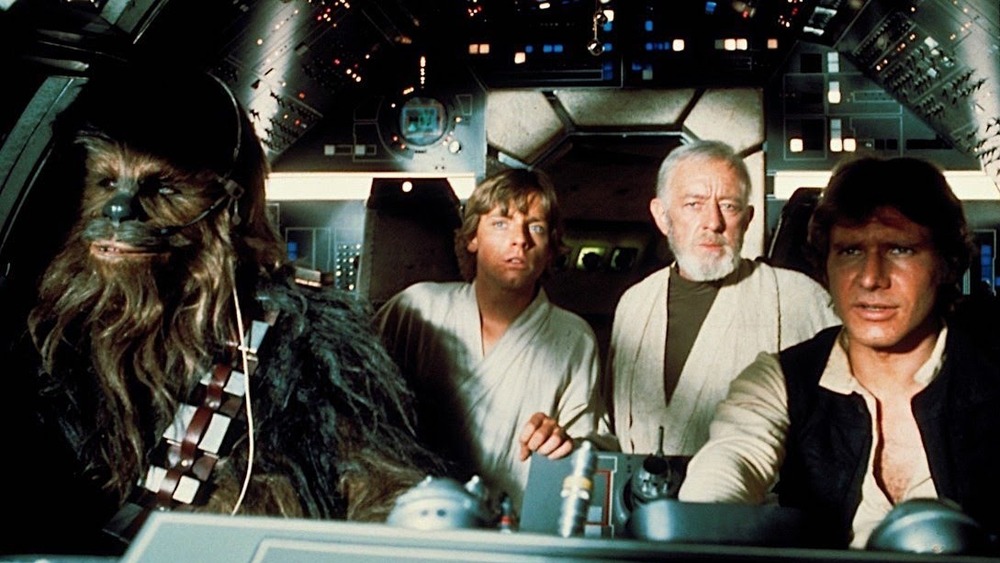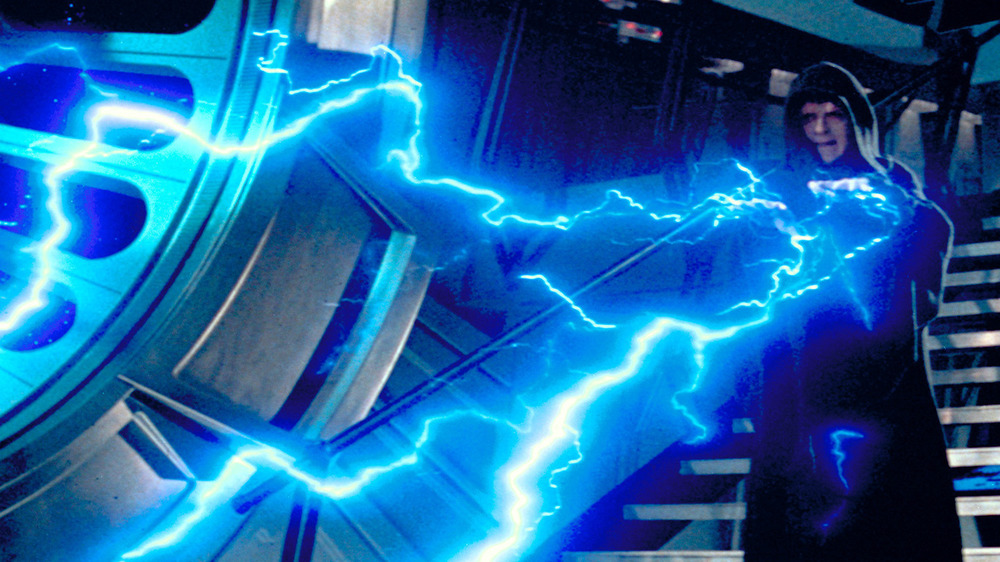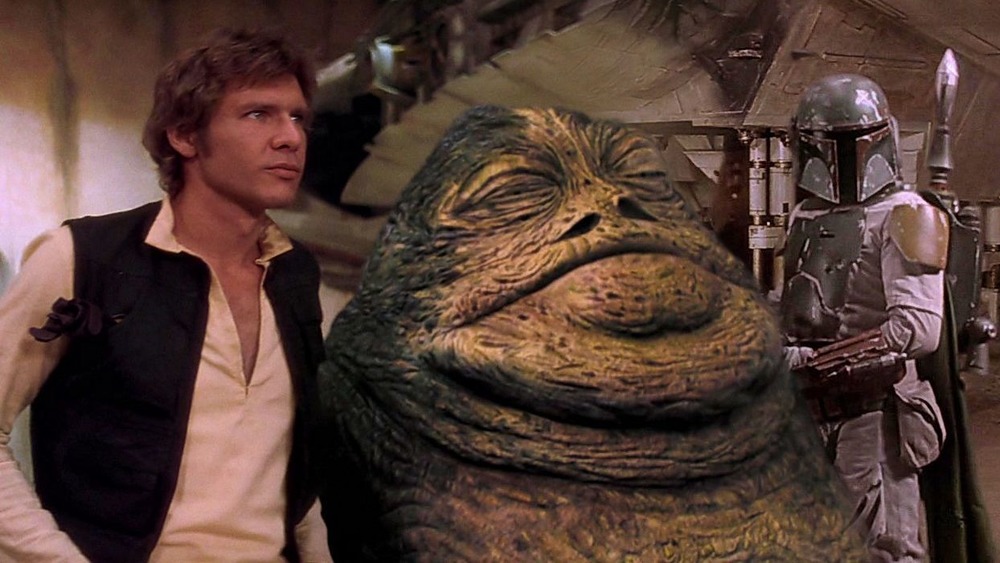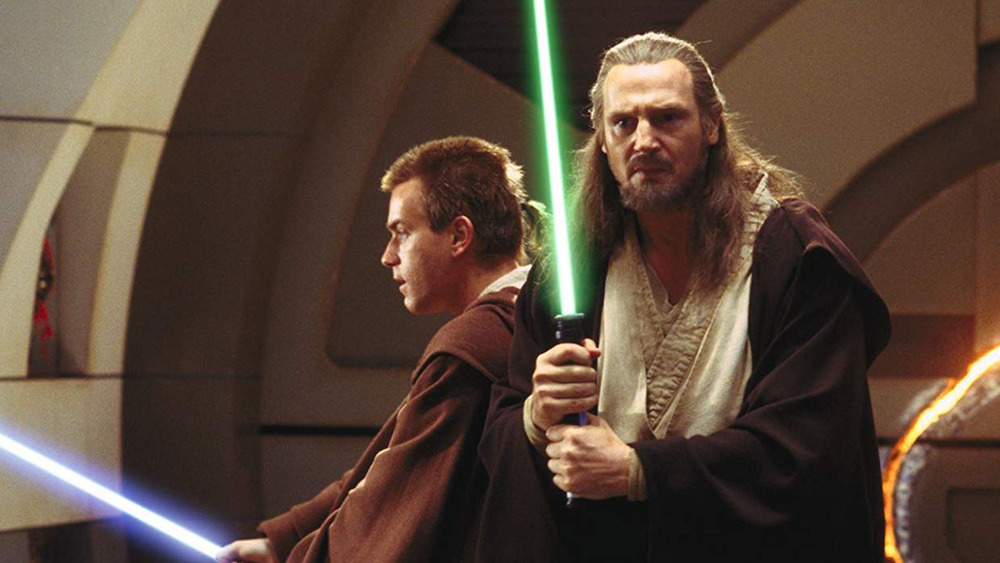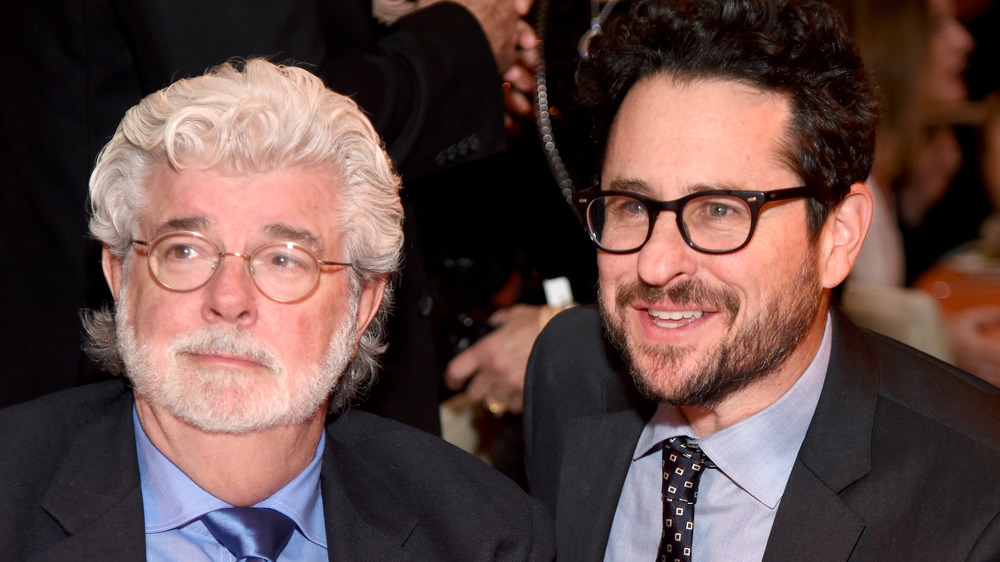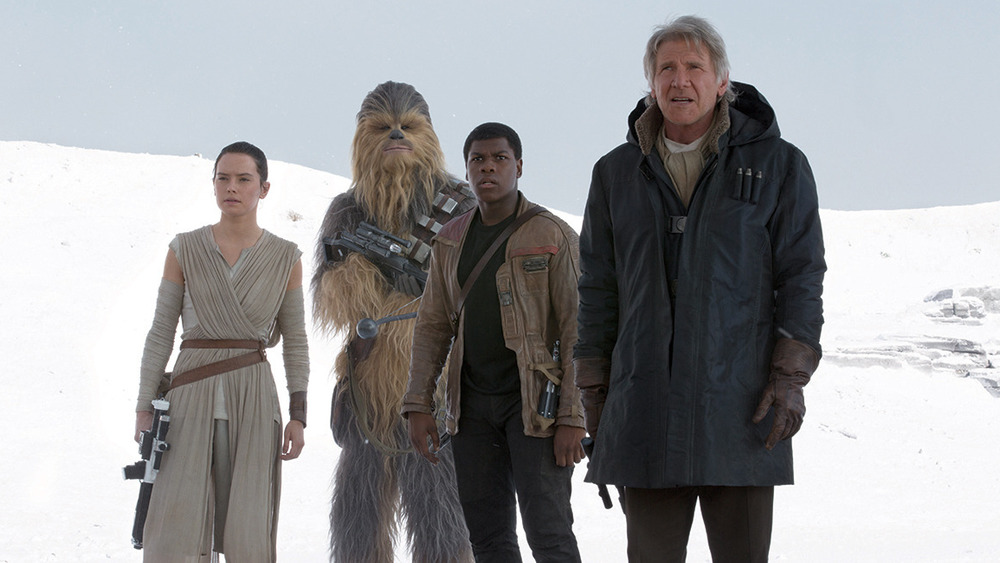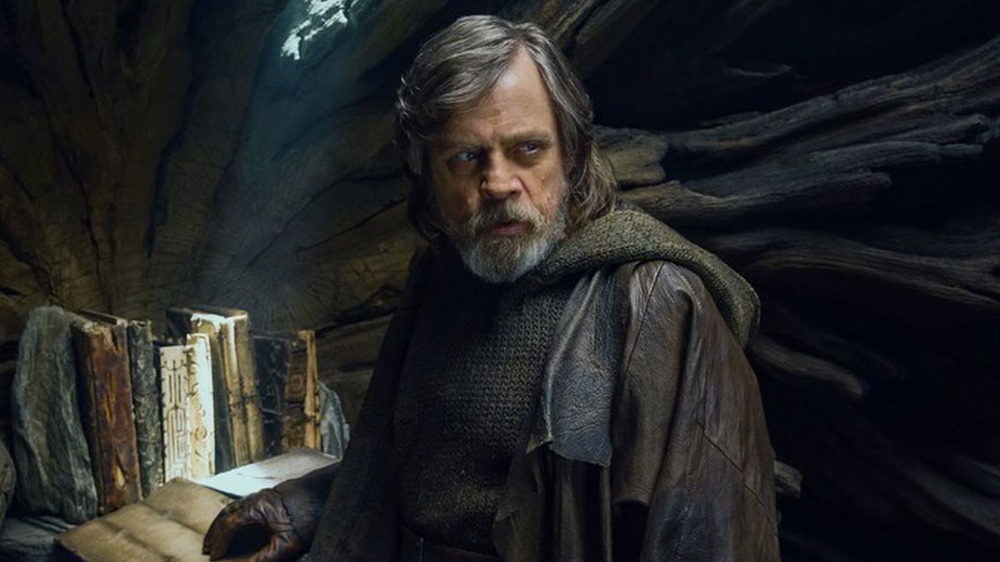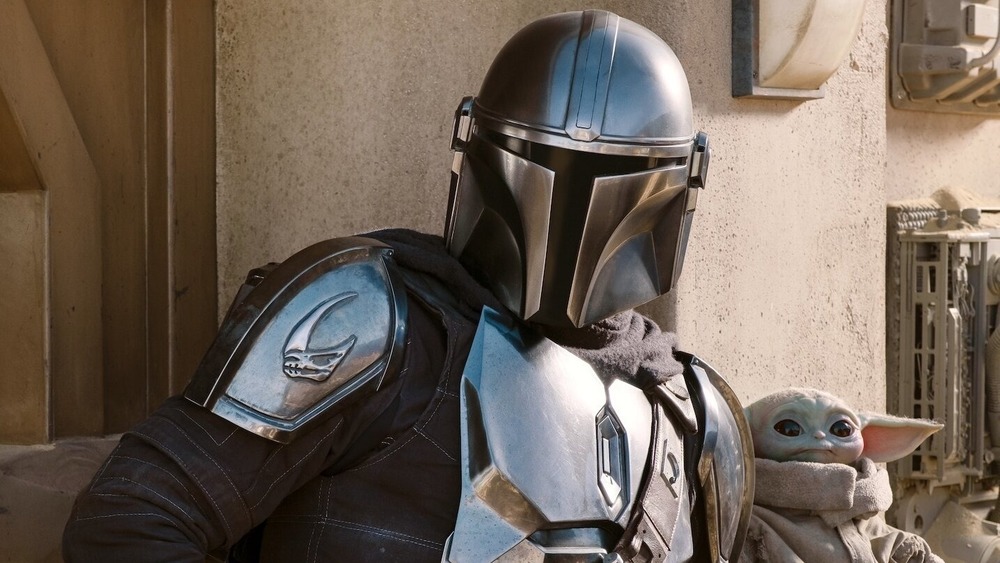The Most Important Dates In Star Wars History
Lucasfilm is now officially 50 years old, and the fact that Star Wars as an existing movie franchise is only 41 this year hasn't stopped the company from putting out 50th anniversary Star Wars toys. But Lucasfilm has never been shy about celebrating an anniversary and offering a deluge of marketing to accompany it. In addition to Lucasfilm's 50th, the franchise has also recently celebrated the 40th anniversary of The Empire Strikes Back and the 20th anniversary of Episode 1: The Phantom Menace. Some people might argue that one of the most widely loathed films of all time may not merit a platinum anniversary extravaganza, but the point is that marking specific dates has always been important to both Lucasfilm and Star Wars fandom.
And there have been so many significant moments: exciting announcements, theatrical releases and re-releases, online trailer debuts, home video releases, video game debuts, and many more. Below we propose the most seminal moments that marked Star Wars in our shared cultural and cinematic past — the most important dates in Star Wars history.
Lucas negotiates future rights to Star Wars (May, 1973)
This was the most famous — and eventually the most lucrative — deal in movie history, and the one responsible for George Lucas' current net worth of over five billion dollars. In lieu of a directing fee for the original Star Wars, Lucas negotiated a deal with 20th Century Fox that allowed him to retain all sequel and merchandising rights. Of course, no one could have imagined at the time how enduring Star Wars would become, or the insatiable thirst for Star Wars merchandise. In 1978 alone, more than 40 million Star Wars action figures were sold, and the toys today remain a three billion dollar a year industry.
For better or worse, Lucas' deal to control Star Wars allowed him to maintain creative control over the remaining films in the original trilogy, the special editions, and the prequels — everything up until he sold Lucasfilm to Disney in 2012. Without this deal, everything after the release of the original film would look much different, and might not exist at all.
Lucas founds Industrial Light and Magic (May, 1975)
Star Wars would not be Star Wars as we know it without Industrial Light and Magic (ILM). Lucas had asked Douglas Trumbull, who had worked on 2001: A Space: Odyssey, to do the effects for Star Wars, but Trumbull was already committed to Close Encounters of the Third Kind, so Lucas put together the group of energetic young artists and engineers that became ILM. Working initially out of warehouse in Van Nuys, California, this group largely was responsible for innovating the Star Wars look and feel, for bringing the fresh aesthetic and a wow factor to the old Flash Gordon, Western, and Samurai conventions that Lucas had cobbled together in his script and concept art.
The ILM artists, who would win many Oscars for their work, would go on to create the effects for every filmed entry in the Star Wars universe, including The Mandalorian, as well as many of the effects for the biggest movie franchises in history, including Terminator, Jurassic Park, Pirates of the Caribbean, Harry Potter, and The Avengers.
Star Wars opens in theaters (May 25, 1977)
Obviously the seminal date in Star Wars history. Retitling it Episode IV: A New Hope, along with a great deal of additional digital fiddling and canonical resituating, came later. But without the release of the original Star Wars, and its instant global impact, none of the rest of the essential Star Wars dates would have come to pass. And in fact, a great deal of skepticism existed on the part of studio execs and others as to whether the movie would do well at all. But audiences started lining up around the block immediately, despite the fact that theaters initially didn't even want to screen the film. People were emerging from screenings only to get back in line to see it again right away. Nobody had ever seen anything like it, and certainly not from the science fiction genre, which, before Star Wars, historically produced B-movies with modest grosses. Since Star Wars, science fiction has been one of Hollywood's most reliable blockbuster genres.
Few cultural touchstones have been more chronicled than the original Star Wars — its production; its reception; the gold mine of its merchandising; the groundbreaking innovations in special effects; the way it radically changed the way motion pictures were made, marketed, and distributed; the tentpole/home run mentality it created in Hollywood. It all launched on that red letter day in the history of movies.
The Empire Strikes Back opens in theaters (May 21, 1980)
Given that it has since become one of the most beloved of all films — a permanent part of the cinematic canon which delivered some of the most unforgettable moments in movie history — it's a bit of a shock to look back and realize that making The Empire Strikes Back was not a foregone conclusion, and that it endured a troubled production. Lucas was on the fence about making the movie at all, before he took a major risk by deciding to finance the movie himself so that he could have complete creative control. He eventually had to call on the film's distributor, 20th Century Fox, for help after the movie went way over budget. The movie's screenwriter, Leigh Brackett, died the day she delivered the first draft, forcing Lucas to bring in Raiders of the Lost Ark scribe Lawrence Kasdan to finish the script. Empire's shooting schedule was massively delayed. And ILM had to literally invent special effect shots as they were finishing the film.
Needles to say, it all worked out. The movie has since come to be considered a masterpiece and the jewel of the Star Wars saga. After the trials of its production, its release was a triumph for Lucasfilm and one of the most significant dates in Star Wars history.
Star Wars is released on VHS (September 1982)
The VCR changed everything by allowing consumers to have much greater control over what they watched and when they watched it. Indeed, it's virtually impossible to imagine living in a world in which filmed content isn't immediately accessible for repeat viewing at our leisure. But before the clunky box landed in living rooms, only two ways existed to see a film once it had left theaters: checking out a theatrical re-release or catching it on television. To that end, Star Wars was re-released in theaters four times after its initial 18-month run, and The Empire Strikes Back was re-released twice (these re-releases were all before 1983 and don't count the Special Edition releases in 1997).
The "repeater" era had officially begun. Now fans of a film could watch it to their heart's content and obsess over every detail. Although there was no Internet in the 1980s on which to trade virtual notes, playgrounds and video stores across America were awash in passionate theorizing and speculation about every little Star Wars detail fans had only fleetingly glimpsed on movie screens (as Kevin Smith's 1992 indie classic Clerks delightfully demonstrated). The timing of the VCR was also perfect for Lucasfilm, who released Star Wars on video in May of 1982 and The Empire Strikes Back in August, stirring fans into a frenzy as they anticipated the theatrical release of the trilogy's conclusion less than a year later.
Return of the Jedi opens in theaters (May 25, 1983)
The Star Wars saga concludes! (Or so it would seem at the time.) Critics had begun to slightly tire of some of the more childish and ridiculous elements of the saga (the Ewoks, Jabba the Hutt's palace band), while others had developed a healthy cynicism about how the films were geared to sell toys (seriously, just count the number of new characters, ships and environments in this movie). But despite the grumbling, Return of the Jedi — famously changed from Revenge of the Jedi at the last minute when Lucas decided that his high-minded Jedi don't seek revenge — was still an enormous hit, warmly received by audiences as a narratively and emotionally satisfying conclusion to the trilogy. Along with Star Wars and The Empire Strikes Back, Return of the Jedi became by far the highest grossing movie of its year. Adjusted for inflation, all three films still rank among the top 20 biggest hits of all time, even 40 years later.
Fans were saddened to say goodbye to beloved characters, but they had more Star Wars to look forward to — or so they thought. Even then, Lucas was talking publicly about his ideas for a nine movie saga. Little did anyone know that despite the mammoth popularity of the saga, the first great Star Wars drought was just beginning.
Star Wars: Special Edition opens in theaters (January 31, 1997)
The opening crawl of Star Wars: Special Edition might have begun with, "The dry spell is over! Fans across the galaxy rejoice!" As it had been fourteen long years without a Star Wars experience in the movie theater. There had been some Star Wars content — the uninspired Ewok movies on television, Star Wars novels, including a Grand Admiral Thrawn trilogy, and a burgeoning catalog of well-received computer games such as Tie Fighter and Dark Forces. But there had been no movies. And Star Wars was a movie phenomenon.
Lucas had made much of the fact that he couldn't realize his vision in the original trilogy because the special effects technology didn't exist yet. He had already begun incorporating minor elements like sound tweaks into re-releases of the original film as early as 1981. But the 1990s CGI evolution allowed him to repaint his canvas entirely, adding new backgrounds, extras, and establishing shots. There were also, of course, more infamous additions, including a walking Jabba the Hutt, plus Greedo shooting at Han Solo first during their cantina showdown — Lucas feared that Han came across as too cold-blooded. These significant "upgrades" (the changes to the special editions of Empire and Jedi would be more minor) added another new element to the Star Wars experience beyond digital effects: perpetual controversy about which versions of Star Wars are more "authentic."
Episode I opens in theaters (May 19, 1999)
Industry execs were gobsmacked that the special edition of a 20-year-old movie that everybody owned on video could still make $137 million in theaters. Turns out audiences really wanted new Star Wars. And as Lucas had proven so adept at doing in the past, he again got audiences salivating over the promise of brand new content — announcing a new trilogy that would be wrought from the advancements in computer effects he had teased in the special editions.
If you didn't experience it at the time, it's hard to overstate how much hype and excitement existed for the new trilogy. Millions were added to the grosses of The Waterboy and Meet Joe Black from fans who paid just to see the first Episode I trailer in the fall of 1998 (often leaving before the features even started). It's also often forgotten that moviegoers didn't initially hate the movie. The reviews weren't terrible — Roger Ebert hailed it as "an astonishing achievement in imaginative filmmaking" — and even though the grumbling over Jar Jar Binks began immediately, viewers found much to like about The Phantom Menace, including the world building, the performances by Liam Neeson and Ewan McGregor, and the epic climactic lightsaber battle. Fans also knew that the movie was the first of a trilogy, and felt confident that Lucas would work out the storytelling kinks in future episodes (Narrator: He wouldn't).
Disney announces the sequel trilogy (October 30, 2012)
If audiences in 1999 seemed more or less initially pleased with Episode I, it wasn't long before a general loathing of the prequels began to dominate the cultural discourse, especially after the poorly received Episode II: Attack of the Clones, featuring the turgid romance between Anakin and Padme. Where once it seemed like it could never happen, people finally seemed to have had enough of Star Wars. The Clone Wars and Star Wars Rebels animated series were years away from illuminating the prequels in a more favorable light.
But you can't keep a good franchise down! Fans had 10 years to forget the pain of the prequel trilogy, as well as 10 more years to yearn for their ever-fading youths. And if there is one thing that the media and culture industries have proven they can sell above all else, it's nostalgia. So the same month that George Lucas sold Lucasfilm to Disney for $4 billion, Disney and new Lucasfilm president Kathleen Kennedy announced a Star Wars sequel trilogy that would feature characters and actors from the original films. "It's now time for me to pass Star Wars on to a new generation of filmmakers," said Lucas. "I've always believed that Star Wars could live beyond me, and I thought it was important to set up the transition during my lifetime." And so, after another long drought, the cycle of hype and breathless anticipation started up all over again.
The Force Awakens opens (December 15, 2015)
After another agonizing three-year wait, Disney finally released Star Wars Episode VII: The Force Awakens, the first of the sequel movies, to theaters. As they had been before the release of Episode I, fans — and even casual moviegoers — were practically rabid with anticipation. They had geeked out over the amazing trailers. (Has there ever been a bad Star Wars trailer? They make even the subpar entries in the franchise look stunning.) They had been impressed by J.J. Abrams' work rebooting Star Trek, and felt confident that he was the man to give new life to Star Wars. The whole world was primed and ready.
And the movie delivered! Well, sort of. Although the reviews were glowing (92% on the Tomatometer) and opening-day fans seemed jubilant over the experience — Han Solo! The Millennium Falcon! — enthusiasm in some quarters quickly dwindled. Once the dazzling light show was over, online forums began to buzz over how derivative The Force Awakens was of A New Hope, featuring another orphan on another desert planet, and another Death Star that gets blown up real good at the end. But again, despite having been burned so often in the past, fans were confident that the trilogy could only get better. Plus they had Rogue One, the first Star Wars standalone film, to tide them over before the release of Episode VIII.
The Last Jedi opens in theaters (December 15, 2017)
Hell hath no fury like a fan scorned — especially if said fan thinks of their brand of fanship as the one true fanship. So why were the self-professed Star Wars fandom gatekeepers so upset with Rian Johnson's The Last Jedi? Diversity mostly. The idea that a galaxy bursting at the seams with every manner of alien life might also feature more women and people of color than were seen in the original and prequel trilogies somehow never occurred to them. These same fans were also upset that Luke Skywalker was not heroic enough in this film, and that his characterization was inconsistent with the original trilogy, despite the fact that Luke champions non-violence by choosing to die rather than strike down Darth Vader in Return of the Jedi. Some of these fans were so incensed by Johnson's vision that they organized a famous "takedown" of the movie's Audience Score on Rotten Tomatoes, to make The Last Jedi seem less popular and acclaimed.
But it was popular — more than $1.3 billion at the global box office — and it was acclaimed, with critics largely praising Johnson's bold, fresh, and artful take. Yet one could argue that every Star Wars content decision since has been directly influenced by the negative reception, including J.J. Abrams' disastrous decision to try to retcon The Last Jedi for his risible sequel trilogy conclusion, The Rise of Skywalker.
The Mandalorian premieres on television (November 12, 2019)
While The Rise of Skywalker was tanking the sequel trilogy in movie theaters, Star Wars was being saved on television. The Mandalorian, along with — to a lesser degree — the highly acclaimed final season of The Clone Wars, swooped in like the Millennium Falcon at the climax of the Death Star run in A New Hope, obliterating the old and making room for a bright future. And the series only became more popular in its second season, seemingly giving Star Wars fans everything they wanted. The enormous appeal of the show lies not in the plotting, which is simplistic to say the least, but in its basic approach, which essentially boils down to a live-action re-enactment of a 10-year-old playing with Star Wars toys in 1983. "What if Boba Fett and Yoda went on a mission together? And they met IG-88 and an Ugnaught on a Speeder Bike? And as they all try to get away, an X-Wing chases them! Pew-pew!"
Needless to say, it's an approach that works, and Disney has decided that the future of Star Wars lies largely on TV. Given the popularity of the show, as well as the way it is dictating the future of the franchise, the debut of The Mandalorian must be considered one of the most important dates in Star Wars history.
